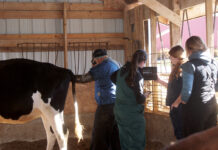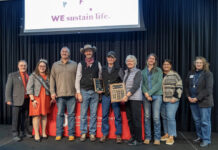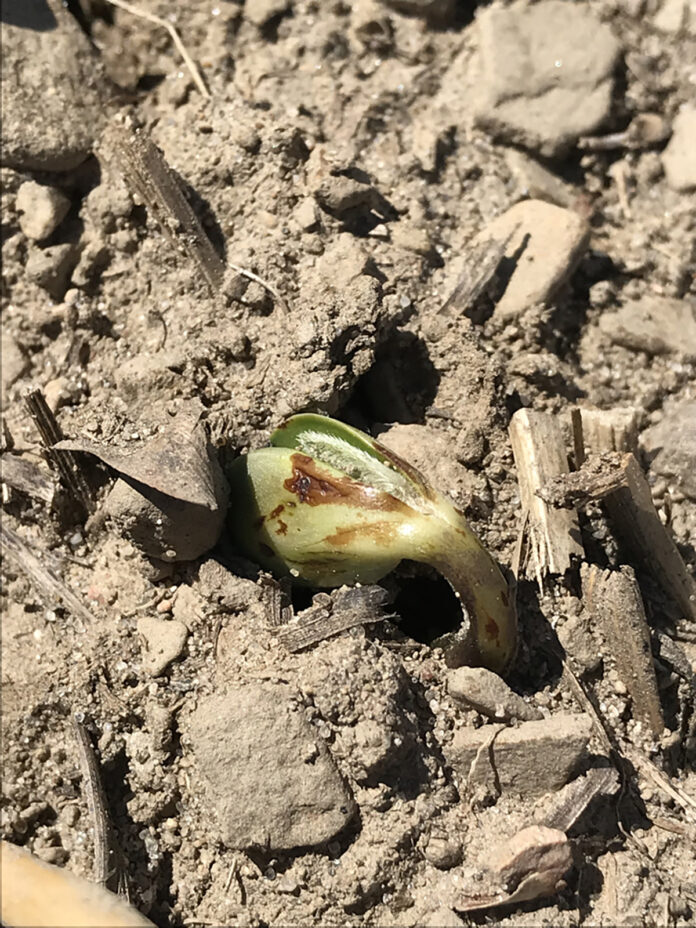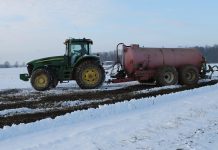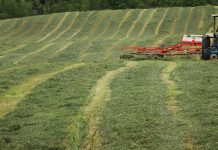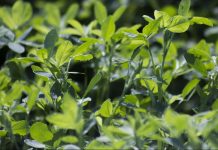Hello, northeast Ohio! Despite having most of our crops planted throughout the region, weather-related challenges persist. Crop emergence has been slow, or in some cases non-existent due in part to soil crusting.
Crusting occurs when rain breaks down soil aggregates into smaller particles that flow over the soil surface, filling in pores and cracks. When the soil dries out this creates a hard surface, making it difficult for seedlings to push through.
Some crops are better at breaking through the crust than others. Of the crops we grow, soybeans tend to have the most difficult emergence through crusted soils. At germination, soybeans will send out an immature root called the radicle that anchors the young seedling to the soil. After this the immature shoot, called the hypocotyl, starts to extend towards the soil surface. As the hypocotyl extends, it creates a hook that pulls the cotyledons.
The issue
In ideal soil conditions the hook breaks through the soil surface in a few hours and then unfolds so the cotyledons can gather sunlight to create energy. Without sunlight, only the energy stored in the seed is available to get the seedling out of the ground.
In crusted soils, the smaller and thinner hook may break the soil surface, but it is unable to pull the larger cotyledons through the hard soil. Without the ability to gather sunlight, the seedling may try for several days to break through the soil surface, but it will eventually run out of energy and die.
Soybeans are resilient plants than can tolerate a fair amount of damage, but not until they are firmly established. At germination, they are the most susceptible to damage from disease, pests and chemicals.
Significant damage to the hypocotyl will girdle the young seedling, eventually killing it. In crusted soils it is common to see broken hypocotyls in rows as the soil holds the plant tightly and does not allow any movement.
Damage from herbicides in crusted soil conditions is also a concern. Pre-emergent PPO herbicides such as flumioxazin, sulfentrazone and saflufenacil can injure young seedlings. If soybeans struggle too long to break through the soil surface, they can take up these herbicides and lead to injury. This injury can be mistaken for seedling diseases such as Pythium or Phytophthora. Soybeans with PPO herbicide injury will have dark purple or brown lesions that may lead to tissue necrosis near the soil surface.
Reducing the risk
While we can’t control the rain, we can implement some practices that reduce the risk of soil crusting. Tillage is the primary culprit of crusting issues and moving to a no-till or reduced tillage system can increase soil aggregate size, minimizing soil breakdown in heavy rains.
Additionally, increased crop residue from minimized tillage can create larger pores that are resistant to being filled with soil particles. Residue can also disrupt the flow of soil particles during heavy rains, preventing a solid soil surface that can dry to a concrete-like consistency.
After soil crusting has occurred, a few tools can be used to help break up the crust to ease germination. The most common tool to break up the crust is a rotary hoe, and several have been pulled out of retirement this year.
Another less common tool is a spring tine weeder, but both come with a risk of additional crop loss. Estimating the plant population can help you decide if using those tools are worth the time. If the plant population is lower than desired, it may just be as useful to consider replanting.


